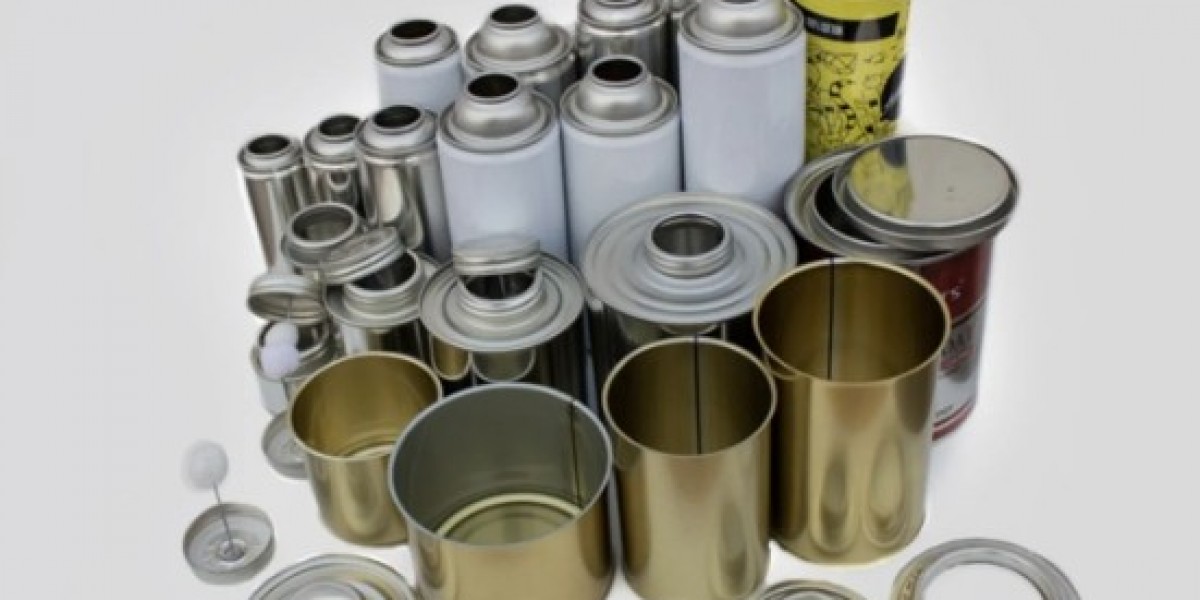Tinplate packaging cans are the future trend with a large market demand
Tinplate packaging containers made from tinplate sheets, widely used in food packaging, daily necessities packaging, instrument packaging, industrial packaging, military packaging, and other fields, with the largest quantity used for food packaging. The main products of tinplate packaging cans include tinplate cans, two-piece beverage cans, three-piece beverage cans, milk powder cans, general food cans, aerosol cans, crown caps, twist-off caps, easy-open lids, miscellaneous cans, chemical cans, and steel drums over 200 liters. The materials used in tinplate packaging cans are mostly tinplate and aluminum. Tinplate mainly consists of low-carbon thin steel sheets, tinplate, chromium-plated thin steel sheets, galvanized thin steel sheet, coated steel sheets, and laminated iron, aluminum materials include aluminum sheets, aluminum foils, and aluminum-coated films.
Tinplate has a very low water vapor permeability, is completely opaque, and effectively prevents harmful effects of ultraviolet radiation. Its gas barrier properties, moisture resistance, light-blocking properties, and aroma retention greatly surpass those of other packaging materials such as plastic and paper. Therefore, tinplate packaging can maintain the quality of goods for a long time. In recent years, China's food and beverage industry has achieved rapid development. With excellent printing performance, noble tinplate texture, and outstanding flavor retention performance, tinplate packaging occupies an irreplaceable position in the food packaging industry. Tinplate packaging products such as tea cans, mooncake gift boxes, and milk powder cans have irreplaceable positions in the domestic food packaging market, providing market opportunities worthy of attention for tinplate waste deep processing enterprises.
Currently, tinplate packaging accounts for about 14% of various packaging materials in Japan and European countries, ranking third after paper and plastic packaging; in the United States, tinplate materials in packaging consumption exceed plastic packaging, ranking second. Tinplate materials in China account for about 8% of the total packaging materials, second only to plastic packaging materials. The rapid growth of the food and fast-moving consumer goods industry is the primary driving force for the rapid development of this industry. The upgrade trend of packaging products directly increases the share of tinplate packaging products in various categories of packaging products; in the future, tinplate packaging will pay more attention to food safety guarantees, thinning and volume reduction, and recycling. In the UK, about two-thirds of steel cans are made from recycled materials. In some European countries, the recycling rate of tinplate cans exceeds 90%. Therefore, new requirements are proposed for the manufacture of tinplate packaging cans, such as containers made of tinplate, ordinary steel drums, with greater strength and rigidity, as well as lower cost and better processing performance. Therefore, steel plates are required to have higher strength and rigidity.
Moreover, tinplate cans for acidic foods require steel plates to have certain corrosion resistance. Such foods are widely used in the international market, such as meat, fish, poultry, dairy products, vegetables, carrots, peas, beets, potatoes, as well as various beverages and soups. Currently, chrome-plated steel plates in China are mainly used to make beer bottle caps, beverage and neutral food can lids, and are rarely used for food cans. This requires steel plates to have greater corrosion resistance. Faced with the current situation of numerous tinplate waste deep processing enterprises, repetitive construction, and excess capacity of low-end products, China's tinplate waste recycling industry is accelerating industry adjustment, and the trend of industry integration is becoming increasingly clear. In particular, leading enterprises rely on their leading technology, advanced management experience, and strong financial strength to expand and strengthen continuously, promote orderly competition in the industry, promote industry elimination, and improve the overall competitiveness of the industry.
Currently, leading enterprises in the tinplate waste recycling industry have begun to move towards large-scale, group, and specialized development. Large tinplate packaging leading enterprises often have stronger risk resistance, more abundant research and development strength, and higher technical level. With the gradual emergence of large tinplate packaging groups, the industry's management level and entry threshold will inevitably be further improved, thereby narrowing the gap with the international advanced level, enhancing the brand value of leading enterprises, forming technological advantages and scale effects.

Website:https://www.jiangyinforward.com
Email :info@jiangyinforward.com







